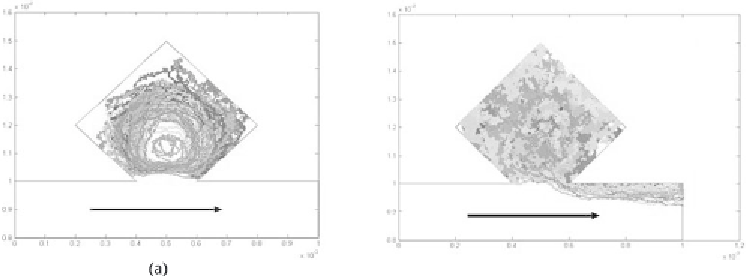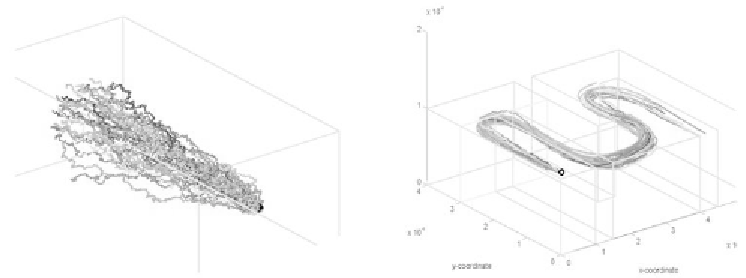Biomedical Engineering Reference
In-Depth Information
Figure 6.47
Random walk of particles trapped in a recirculation microchamber: (a) if the diffusion
constant is small enough (
D
= 10
-
10
m
2
is the particles are trapped, and (b) they escape progres-
sively when the diffusion coefficient is sufficiently large (
D
= 10
-
9
m
2
/s).
simultaneously provide an quantitative estimate of each constituent. In biotechnol-
ogy, the analysis is usually carried out on a mass spectrometer (MS) placed behind
the chromatography column.
The name
chromatography
may look strange at first sight. Color has nothing to
do with modern chromatography, but the name was given to this method of separa-
tion by the Russian botanist Tswett who used a simple form of liquid-solid chroma-
tography to separate a number of plant pigments. The colored bands he produced
on the adsorbent bed evoked the term chromatography for this type of separation.
In a chromatography device, there are two phases: a mobile phase and a sta-
tionary phase. The mobile phase transports the sample with the targets and other
compounds, and the stationary phase is designed to retain longer in the column the
compounds which associate best with it. Targets and compounds are then separated
in zones or bands [21]. A typical design of a chromatography column is that of the
size exclusion chromatography sketched in Figure 6.53. In such a device, the small-
sized proteins or peptides travel at a smaller speed through the column, because
they enter inside the gel beads, whereas large-sized proteins are excluded and travel
faster in the connected porosities. The result is the separation of the particles into
two disjointed bands (Figure 6.54).
Figure 6.48
3D dispersion of a tracer: (a) straight channel and (b) turning channel






